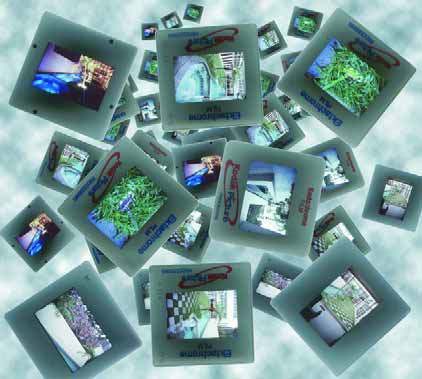It began as the playful vision of Bob and Kat Tudor, husband-and-wife philanthropists and founders of The Smokebrush Theatre in Colorado Springs, Colo., who decided one day to donate a unique fountain to the children of their city. Now that vision, fully realized, belongs to the citizens of this sprawling town at the foot of the Rocky Mountains in the form of a dazzling water display and a folksy character named Uncle Wilber. Multi-talented artists in their own rights, the Tudors developed the aesthetic and creative concepts but knew from the start that they would need to enlist advanced technical expertise to
Most coffee-table books on swimming pools published to date have dealt almost exclusively with the work of architects and landscape architects. The past year, however, has seen the publication of three new books about pools - each of them focusing primarily on the work of pool contractors. The result is three books that cover a broad range of styles and designs - a trio I've already found to be extremely useful as
Last month, we covered a side-yard project that fulfilled one family's dream of gaining a kitchen garden. This functional design worked well for what had basically been a small, unused space - but it's by no means the only use for such spaces. Small spaces can lend themselves to a number of different possibilities. Discussing the clients' lifestyle or wish list might uncover something they really want or can identify ideas they haven't yet considered as possible uses for the space. Case in point: I had a client who wanted to create three
Last month, I began a discussion of things that those of us in the watershaping trades can do to improve our collective profile with the public - not to mention enhance our collective self-image. Education, of course, is a huge factor. And so is the level of professional courtesy with which we treat both clients and prospects. But those two points, discussed in detail last time, have less to do with the way we approach the practicalities of our businesses than is the case with another point that bears discussion: that is, project management and how we
I understand why so many people love digital cameras: You don't have purchase or develop film, you can check your images instantly, and it's easy to upload pictures onto your computer and
The process of designing a watershape or garden usually requires the designer to answer a number of questions - the vast majority of them having to do with seeing the water and the landscape. Indeed, from considerations of color and scale to managing views and ensuring visual interest within the space, much of the designer's skill is ultimately experienced by clients and visitors with their eyes. But what if your client is blind or wheelchair-bound or both? How do you design for them? What colors do you use in your planting design? Would you even care about color? How will they move through the space and what experiences will await them? What would be the most important sensory evocation - sound, fragrance or texture? These are the sorts of special questions we asked ourselves after being approached by clients who had the desire to create a sensory garden for visually impaired and physically handicapped people. The experience shed a whole new light on the power of non-visual aesthetics and prompted me to
It's truly a diamond in the rough: a huge, sparkling blue pool set in the middle of nowhere in a country that is probably best known for being the gateway between two grand oceans. For a time before I arrived on the scene, however, the enormous rectangular swimming pool at Palabra de Vida, a Christian missionary camp in Chame, Panama, was anything but shimmering. The mission operates a camp for the region's underprivileged children, who visit the facility in shifts that stretch across several months each year. There are times when
When I first picked up Water and Architecture by Charles W. Moore (published by Harry H. Abrams in 1994), I thought I'd found the perfect resource for those of us who design and build contained, controlled bodies of water. As I delved into this book's incredibly well-illustrated 224 pages, however, for a short time I worried that the text was mostly irrelevant to the working lives of watershapers. Ultimately, however, I found the text to be very helpful - even if it wasn't in the manner I had initially thought. I was disheartened initially because the text seemed so broad in its coverage of water and architecture - and so rooted in history and philosophy - as to be of little practical use. Specifically, Moore deals with subjects as grand as rivers, oceans, harbors and architectural history in very broad and almost
The site was chosen because the existing water, terrain and natural landscape were a perfect fit: Like no other available space, the design team saw that this setting could be used to symbolize the character of Vietnam’s landscape – wetlands and bogs, water crossings, hills and forests, meadows and plains – and shaped into a memorial to casualties of a war that ended in Southeast Asia nearly three decades ago. It’s a beautiful and peaceful space, one that now encompasses four acres of land around the perimeter of Duck Pond, a small and scenic body of water nestled in the gently rolling landscape of






















